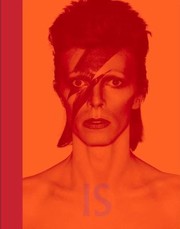David Bowie Is...
3 stars
1) "David Bowie burst on to the international scene at a pivotal point in modern sexual history. The heady utopian dreams of the 1960s, which saw free love as an agent of radical political change, were evaporating. Generational solidarity was proving illusory, while experimentation with psychedelic drugs had expanded identity but sometimes at a cost of disorientation and paranoia. By the early 1970s, hints of decadence and apocalypse were trailing into popular culture. Bowie's prophetic attunement to this major shift was registered in his breakthrough song, 'Space Oddity' (1969), whose wistful astronaut Major Tom secedes from Earth itself. Recorded several months before the Woodstock Music Festival, 'Space Oddity', with its haunting isolation and asexual purity and passivity, forecast the end of the carnival of the Dionysian 1960s."
2) "Music was not the only or even the primary mode through which Bowie first conveyed his vision to the world: he was …
1) "David Bowie burst on to the international scene at a pivotal point in modern sexual history. The heady utopian dreams of the 1960s, which saw free love as an agent of radical political change, were evaporating. Generational solidarity was proving illusory, while experimentation with psychedelic drugs had expanded identity but sometimes at a cost of disorientation and paranoia. By the early 1970s, hints of decadence and apocalypse were trailing into popular culture. Bowie's prophetic attunement to this major shift was registered in his breakthrough song, 'Space Oddity' (1969), whose wistful astronaut Major Tom secedes from Earth itself. Recorded several months before the Woodstock Music Festival, 'Space Oddity', with its haunting isolation and asexual purity and passivity, forecast the end of the carnival of the Dionysian 1960s."
2) "Music was not the only or even the primary mode through which Bowie first conveyed his vision to the world: he was an iconoclast who was also an image-maker. Bowie's command of the visual was displayed in his acute instinct for the still camera, honed by his attentiveness to classic Hollywood publicity photographs, contemporary fashion magazines and European art films. His flair for choreography and body language had been developed by his study of pantomime and stagecraft with the innovative Lindsay Kemp troupe in London in the late 1960s. Bowie's earliest ambition was to be a painter, and he has continued to paint throughout his life - especially, he has said, when he is having trouble writing songs. The multimedia approaches that were gaining ascendance over the fine arts during the 1960s also helped foster his desire to fuse music with visuals on stage. While working at an advertising agency when he was 16, he learned story-boarding techniques that he later employed for his videos."
3) "By the time we saw him on the front of an album, Aladdin Sane (1973), Ziggy Stardust was already in eclipse. The cover photograph by Brian Duffy with its red-and-blue lightning bolt crossing Bowie's face has become one of the most emblematic and influential art images of the past half century, reproduced or parodied in advertising, media and entertainment worldwide. It contains all of Romanticism, focused on the artist as mutilated victim of his own febrile imagination. Like Herman Melville's Captain Ahab, whose body was scarred by lightning in his quest for the white whale, Bowie as Ziggy is a voyager who has defied ordinary human limits and paid the price. Aladdin sane in the realm of art is a lad insane everywhere else. A jolt of artistic inspiration has stunned him into trance or catatonia. He is blind to the outer world and its 'social contacts' - Bowie's recurrent term for an area of experience that had proved troublesome for Major Tom as well as himself. Pierre La Roche's ingenious zigzag make-up looks at first glance like a bloody wound - an axe blow through the skull of a Viking warrior laid out on his bier. Ziggy appears to be in hibernation or suspended animation, like the doomed astronauts in their mummiform chambers in Stanley Kubrick's 2001: A Space Odyssey (1968), which had inspired Bowie's 'Space Oddity'. The background blankness is encroaching like a freezing cryogenic wave upon the figure. It's as clinical as an autopsy, with a glob of extracted flesh lodged on the collarbone. This teardrop of phalliform jelly resembles the unidentifiable bits of protoplasm and biomorphic conglomerations that stud the sexualized landscapes of Salvador Dalí. Also Surrealist are the inflamed creases of Ziggy's arm-pits, which looklike fresh surgical scars as well as raw female genitalia. Like Prometheus, a rebel hero to the Romantics, he has lost his liver for stealing the fire of the gods."
4) "Bowie's theatre of gender resembles the magic-lantern shows or phantasmagoria that preceded the development of motion-picture projection. The multiplicity of his gender images was partly inspired by the rapid changes in modern art, which had begun with neoclassicism sweeping away rococo in the late eighteenth century and which reached a fever pitch before, during and after World War I. Bowie told a TV interviewer in 1976, 'I was always totally bedazzled by all the art forms of the twentieth century, and my interpretation comes out my way of these art forms from Expressionism to Dadaism'. 'Even if the definition isn't understood', he tried to 'break it down' to convey his own 'feeling' to the audience. One of Bowie's leading achievements is his linkage of gender to the restless perpetual motion machine of modern culture. 'I have no style loyalty', he has declared. His signature style is syncretism - a fusion or 'synthesising' (his word) of many styles that is characteristic of late phases such as the hybrid, polyglot Hellenistic era, when religions too seeped into one another. Bowie has in fact used the word 'hybrid' to describe his approach. His stylistic eclecticism in performance genres - combining music hall, vaudeville, pantomime, movies, musical comedy, cabaret, theatre of cruelty, modern dance, French chanson and American blues, folk, rock and soul - created countless new angles of perception and startling juxtapositions."
5) "Broadly speaking, composers of all periods in history can be divided into three groups: genuine innovators, 'second-wave' absorbers who synthesize pioneer developments and adept, polished sweepers who satisfy the public's delayed appetite for what was new five or ten years previously. It is a common misconception that the 'famous', landmark composers like Bach, Mozart, Beethoven, Brahms, Wagner or Gershwin were cutting-edge innovators of the first group, whereas in fact all of the above fall into the second category, as does Bowie. [...] What all these 'second-wave' composers have in common is a highly developed sense of what else is in the ether, what styles are emerging and where to find such ingenuity. They are then able to blend new, exploratory ideas with their own well-developed skills, packaging the ensuing mix for the general audience in such a way as to intrigue and delight without leaving them utterly bewildered. These are rare gifts, sometimes - perhaps always - intuitive rather than studied, which is why the number of composers whose work results in a universal change in stylistic direction remains small. Bowie's name is among them."
6) "[Sir Cristopher Frayling]: We keep talking about Bowie, and actually we're talking about the 'myth of Bowie'. I'm not sure even he knows who he is anymore - rather like some actors. [...They've] played the same parts so often, we confuse them with the person they are playing. Bowie has played lots of parts, but we always talk about him as if they exist. I don't know what lies behind those parts. All I know about is the myth, because that is what we are presented with."

